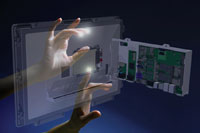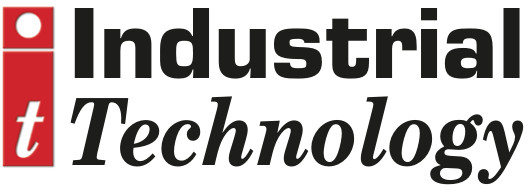
Posted to News on 29th Jan 2013, 00:00
Industrial HMIs embrace consumer trends
HMIs for the industrial environment are rapidly becoming as flexible and user-friendly as consumer devices, says Max Scholz of Kontron.

>Any HMI purchase is a major, long-term investment. Apart from the high performance and reliability that is required of them, the new products also have to reflect the latest trends in the market. Consumer device characteristics such as large format screens, touch-screens and attractive designs are now also entering the industrial segment.
>To be able to survive in the competitive industrial market, HMIs have to fulfil all the demands of increasing automation, quality, energy-efficiency and productivity. Factory engineers and technical commercial divisions are therefore looking for an intelligent display, which can be seamlessly integrated into their machinery. In the products on offer at the moment, a number of trends can be seen which have long been established in the fast-moving consumer market. Today, it's difficult to imagine a smartphone without a touch-screen, large format displays are a common sight whether as screens in the office environment or as TVs in the home. The industrial market is following suit and gradually claiming these technologies for its own fields.
>Between 2010 and 2015 the global market for intelligent displays, which often already integrate these technical advantages, is predicted to grow from $900m to nearly $1,500m. In the EMEA region alone, the HMI market is experiencing an annual expansion of 7.6% according to IMS Research. What is driving this growth? With the need to increase productivity, demands on the machines' complexity and computer performance grow too. The more complex production processes become, the greater the challenge of organising production lines and optimising automation so that they remain competitive in the long term.
>To achieve this, an industrial company has to collate huge amounts of fragmented information from multiple platforms and deliver it to one central point, because only via a central access point can the increasingly complex calculations be managed in real time. In practice this means that panel PCs will increasingly replace decentralised control and monitoring solutions. More frequently machinery is being controlled via a single integrated panel PC or an intelligent display. This also involves less cabling which is more than just a practical side-effect. At the same time, high-performance HMIs are carrying out more and more functions in addition to visualisation. These range from tasks such as controlling to data processing for higher-level systems right up to the communication with other machines.
>Notably, the significance of user interfaces which respond to touch is growing. Alongside the resistive surfaces which are especially suitable for operation with gloves, the demand for capacitive touch-screens is growing too. These screens are capable of multi-touch: by moving one's fingers, sections of images can be enlarged or virtual keyboards can be operated.
>Large format wide screens represent another important trend. Where previously 7 or 10in screens were in use, today more and more 12.1 or 15.6in screens are being used by industrial companies and the 15 or 17in monitors are gradually being replaced by 20 to 24in screens. Likewise, 4:3 displays are going to gradually be replaced by the wide screen format 16:9. The advantages are obvious: more information can be displayed on large format screens and the user can more easily interact with the system.
>In industrial automation, the ability to work with a split screen is a particular advantage: on one side of the screen, data and graphics can be depicted, while on the other side operation can take place via the user interface. The scratch-resistant glass surface offers maximum protection and is simple to clean - which is also an important issue. At the same time demand for flexible complete solutions is on the rise. So that the systems can be upgraded more simply and the monitors exchanged with no upheaval, the hardware and the software have to be compatible. Even new employees can become familiar with the system so much faster if the components are perfectly matched.
>Picking up on these latest trends, Kontron has launched two new 'intelligent displays' that integrate seamlessly into the product family and which will help customers to achieve significant cost-savings in the long term. The Micro Client 3 and the OmniClient are not only intelligent and intuitive, but scalable too. They offer a range of different display sizes which come in a modern industrial design.
>Valuable customer feedback has been fed into the development of new products. For example, the Micro Client 3W is a 15.6in HMI which is Kontron's first product to feature a capacitive touch-screen, multi-touch function and a 16:9 wide screen with a glass surface. The touch-sensitive wide screen monitor allows for the very precise control of production lines. Furthermore, the product series is available in different display sizes ranging from 10 to 17in with proven, resistive touch-screen. The pressure-sensitive, resistive monitor still offers great advantages in the industrial environment. Thanks to its double-layer capacitor (Gold Cap) the Micro Client 3 series is virtually maintenance-free. Furthermore, its powerful graphics, CPU and the LED backlight go to ensure that Kontron lives up to its reputation as a top manufacturer.
>The OmniClient, a successor of the V Panel Express, is a product that Kontron developed especially for industrial automation. The panel PC monitors and controls all the machines in a factory and is precisely tailored to supervision tasks in industrial manufacturing processes. It comes in an appealing, user-friendly design with a rimless wide screen display and resistive 5-wire touch-screen with a range of 15 to 23in monitors. Further highlights are the LED backlight as well as its wireless connectivity.
>Due to their high system performance, both HMIs offer a 10 year long lifecycle. In addition to this, Kontron was in a position to significantly improve the price/performance ratio of both the Micro Client 3 and the OmniClient in comparison to their predecessors. At Kontron, all products have to pass rigorous in-house testing before they are launched into the market. And even beyond the purchase, Kontron and its global organisation is always there for their industrial customers with extensive after-sales support which ensures that the HMIs continue working reliably over their long lifecycle.







